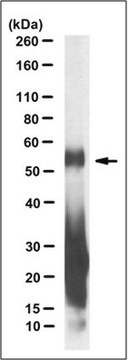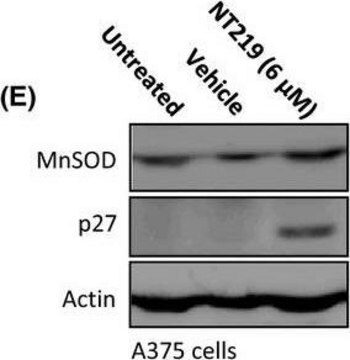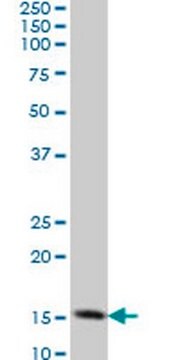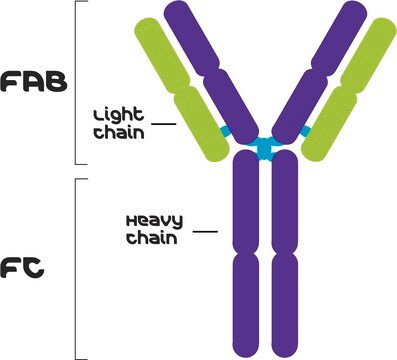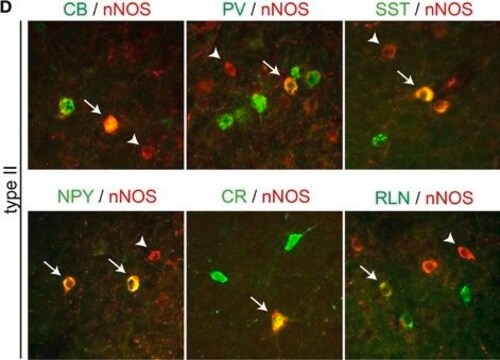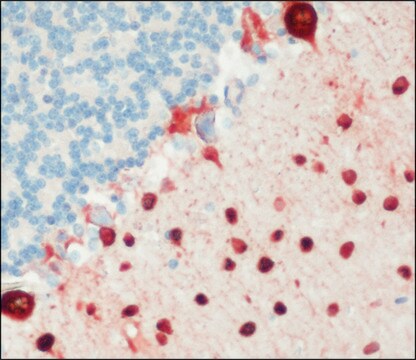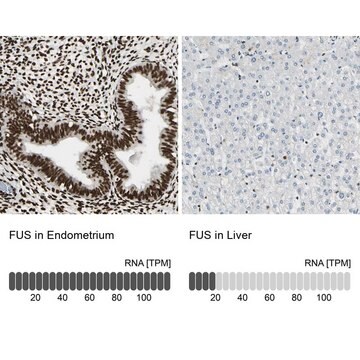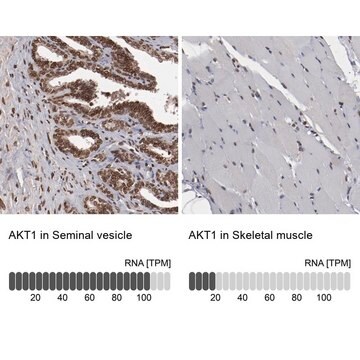MABN778
Anti-C9ORF72/C9RANT (poly-GR) Antibody, clone 5A2
clone 5A2, 1 mg/mL, from rat
Sinonimo/i:
c9orf72
Scegli un formato
Scegli un formato
About This Item
Prodotti consigliati
Origine biologica
rat
Livello qualitativo
Forma dell’anticorpo
purified antibody
Tipo di anticorpo
primary antibodies
Clone
5A2, monoclonal
Reattività contro le specie
human
Reattività contro le specie (prevista in base all’omologia)
all
Concentrazione
1 mg/mL
tecniche
immunohistochemistry: suitable
western blot: suitable
Isotipo
IgG2aκ
Descrizione generale
Specificità
Immunogeno
Applicazioni
Neuroscience
Neurodegenerative Diseases
Qualità
Western Blotting Analysis: 0.2 μg of this antibody detected 10 μg of GR-GST recombinant protein with 15 GR repeats.
Descrizione del bersaglio
Stato fisico
Stoccaggio e stabilità
Esclusione di responsabilità
Non trovi il prodotto giusto?
Prova il nostro Motore di ricerca dei prodotti.
Codice della classe di stoccaggio
12 - Non Combustible Liquids
Classe di pericolosità dell'acqua (WGK)
WGK 1
Punto d’infiammabilità (°F)
Not applicable
Punto d’infiammabilità (°C)
Not applicable
Certificati d'analisi (COA)
Cerca il Certificati d'analisi (COA) digitando il numero di lotto/batch corrispondente. I numeri di lotto o di batch sono stampati sull'etichetta dei prodotti dopo la parola ‘Lotto’ o ‘Batch’.
Possiedi già questo prodotto?
I documenti relativi ai prodotti acquistati recentemente sono disponibili nell’Archivio dei documenti.
Il team dei nostri ricercatori vanta grande esperienza in tutte le aree della ricerca quali Life Science, scienza dei materiali, sintesi chimica, cromatografia, discipline analitiche, ecc..
Contatta l'Assistenza Tecnica.